The breakfasts at the Plockton Inn are hands down the best I’ve ever had. With a dollop of haggis the Full Monty is turned from an English Breakfast to a proper Scottish one. The smoked kippers are delicious and one shouldn’t let a few wee bones put you off. Scrambled eggs with the smoked salmon is a bit of alright but I was feart that I’d leave without my favorite, the smoked haddock and poached egg as the fish delivery had not come for a couple days. This is why I always say one must book for a 4 day minimum! The train arrive near half 12 so I had plenty of time to eat my breakfast leisurely, digest and hike the 1/2 mile or so up the long hill to the rail station. The old station has been converted into a rental but it would be an act of kindness if the current owners could put a bench under the overhang to be able to sit out of the rain.
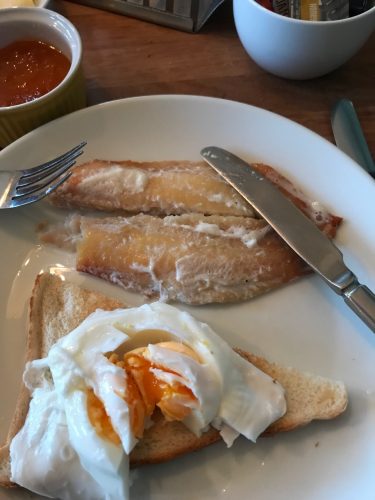
I’m sure this metal netting is used in the States to keep bits of rock fro killing anyone but I can’t recall ever seeing it’s use as the train sped by.
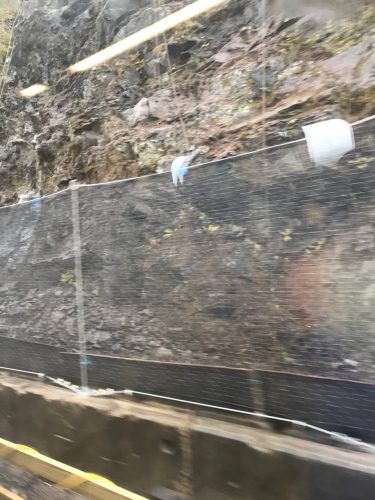
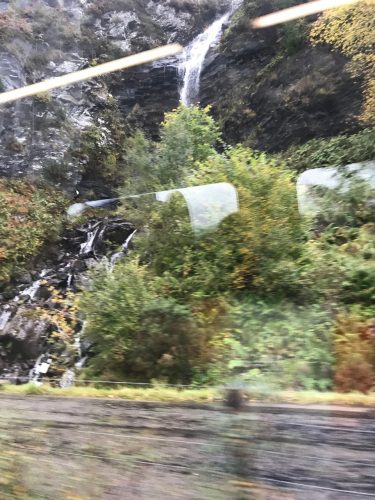
The train to Inverness passes some lovely scenery
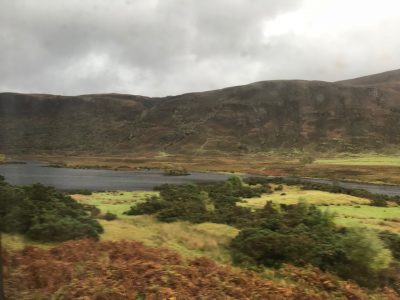
And once I got to Nairn I was pleasantly surprised to find such a grand beach with lots of flat skimming stones. I found out I can no longer toss one more than a few meters but still had the skip.
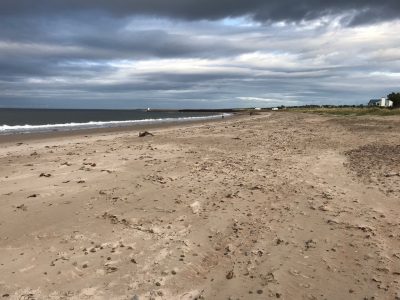
An oil tanker in the background across the Moray Firth. I’ve stayed in Evanston on the other side
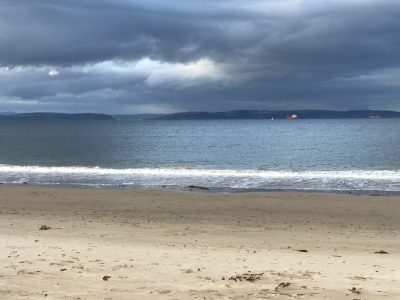
I’d been to Peterhead, the most eastern point of Scotland and proudly wear the cap the harbour master gave me and I once spent Christmas in Inverness but Nairn makes up a spot in between and so I opted to stay here rather than Inverness as the Culloden Battlefield is about half way between the two and visiting it was on my bucket list.
As I’ve said before regarding battlefields, if they were a place of significance they are usually preserved as fields of remembrance. This one is particularly important and bleak. The last battle ever fought in Britain was here. The Scots, mostly Highlanders, fought the English in a misguided attempt to place an Italian on the throne of England. The overly romanticized Bonnie Prince Charlie or Charles Edward Louis John Casimir Sylvester Severino Maria Stuart, to offer his complete moniker was the grandson of James II of England and VII of Scotland and from 1766 claimed to be the rightful heir to the throne of Great Britain. Born in Rome, he failed to get the French and Irish help he was promised but was able to gather s handful of Scots to his side. His great grandfather, James VI became James I of England and immediately led his new English army to war against the Scottish nobles who had resisted his claim of master of them all in 1603. As divers Stuarts either fled the country or lost their heads William, a Dutch prince, married Mary, the daughter of the future King James II, in 1677. After James’ succession to the English throne in 1685, the Protestant William kept in close contact with the opposition to the Catholic king. After the birth of an heir to James in 1688, seven high-ranking members of Parliament invited William and Mary to England. William landed at Torbay in Devonshire with an army of 15,000 men and advanced to London, meeting no opposition from James’ army, which had deserted the king. James himself was allowed to escape to France, and in February 1689 Parliament offered the crown jointly to William and Mary, provided they accept the Bill of Rights. So ends the short history lesson.
And since so much time had passed since the abdication of James II, Charlie was often referred too as “The Pretender.” Although his army had won a battle or two it was soon proved that what he wasn’t was a brave and courageous general. He ran the tactical efforts of the Battle of Culloden from a position so far in the rear that he was unable to see any of his or the enemies troop movements and often directed attacks that were nothing more than suicide charges. It didn’t help matters that the Duke of Cumberland not only surpassed Charles in ability, he surpassed nearly any British general ever in cruelty. Culloden is best remembered for the wiping out of the flower of Scotland, it treasure of brave men dying of waves before superior forces and the massacre of those who survived the battle. Estimates are that between 1500 and 2000 Scots and the few Englishmen from a Manchester regiment lost their lives that day against maybe 300 regulars.
A waste of men fighting for a lost cause to put a Roman dreamer on the throne of England! But after the battle the Prince proved his honor by fleeing the battle field and eventually escaping from Skye with the help of the more heroic Flora MacDonald who helped him by dressing him as her maid.
Red and blue flags mark the approximate lines of the initial battle and stones with clan names marking the mass graves although the victors did not take the time to separate the fallen into clans but rather stripped them of anything of value as victors always do and dumped them in hastily dug pits.
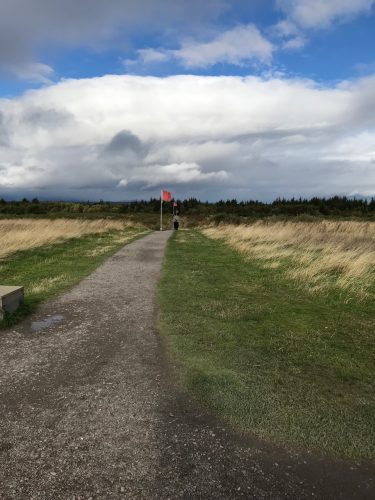
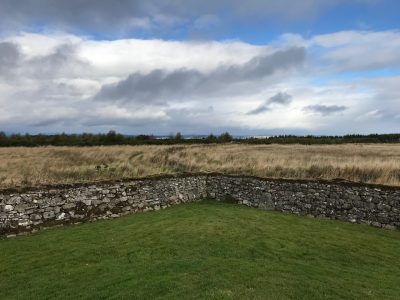
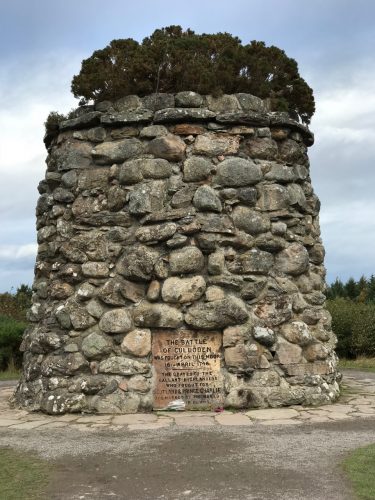
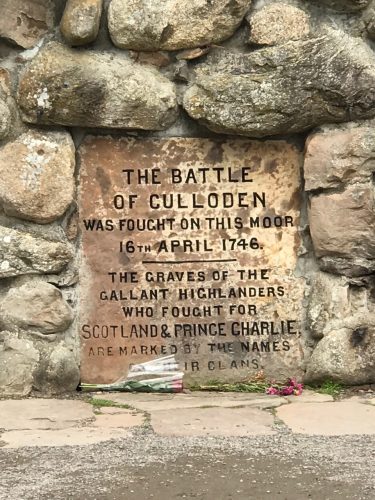
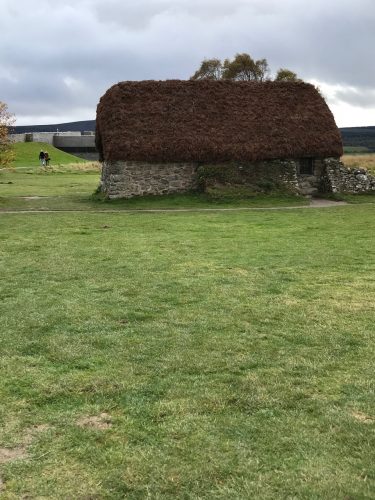
Conservation in action seems a bit oxymoronic.
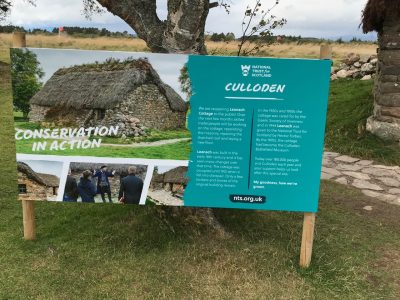
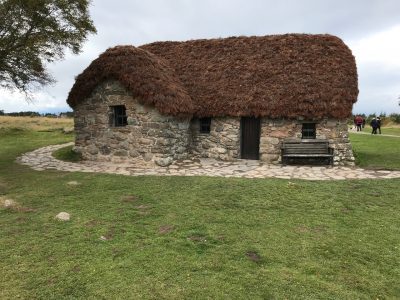

Back in Nairn I spotted this gentleman, Dr John Grigor who for over 50 years touted the benefits of the coast and waters as good for one’s health. I just liked his muttonchops!
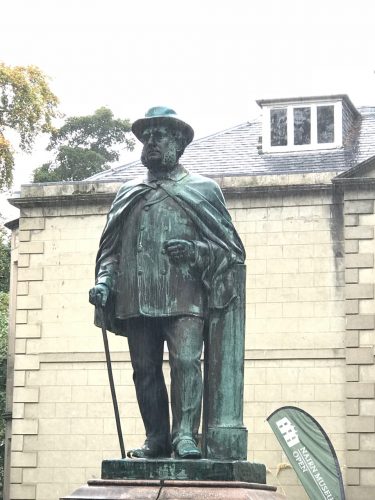
{ 0 comments… add one now }